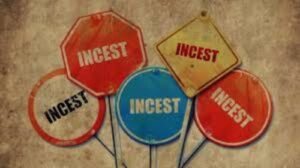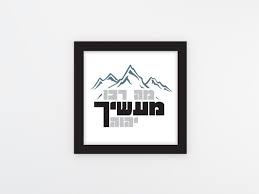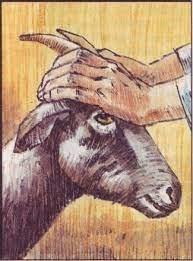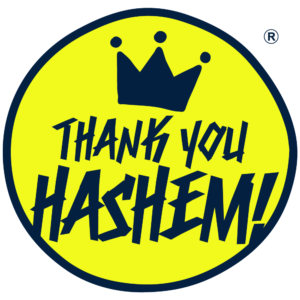Raboyseyee & Ladies,
Thank You Hashem!
Let’s begin here:
A big mazel tov to the heylige Ois himself for reaching a new milestone. Not for hitting a new high on the weight scale -that record too very close to being shattered following 10 days of gorging while away for Pesach- but for surpassing 200,000 internet hits on his last post on the topic of Kitniyos. Those numbers do not include the burgeoning list of email subscribers, Facebook, Instagram and other places where the weekly parsha review can be found. Givaldig! The bottom line: real pshat plus humor, sarcasm, and even sexual innuendo where the parsha has it bifeirush (in the text) or, as expounded upon by Rashi, the heylige Gemora and or medrish, sells! Were the rebbes in yeshiva to employ these methods, we’d all remember everything we were taught. Veyter.

According to the Oxford Languages dictionary, logistics is the detailed coordination of a complex operation involving many people, facilities, or supplies. Who was the first to operate and manage an expansive logistical operation? Who was the father of logistics? We shall explore that below.

Shoin, the Ois and family are back from Orlando, where we spent this past Yom Tov at a place called Encore at Reunion. More on Encore and the very pleasant experience another time. Many will spend this coming shabbis and the days ahead discussing their flight mishaps and other adventures. Some will be raving about their Pesach experiences; others, as reviews pour in from one program over in Panama, not so much. Many will be discussing Pesach 2023, how it ends on a Thursday evening and what to about getting home for shabbis; oy vey! Few if any, will be discussing the daf yomi; gashmius only please. One thing is zicher: even fewer will be discussing Yom Kippur. Ober, the heylige Ois, having read the parsha mid-flight, is here to tell you that Pesach rolls into Yom Kippur this shabbis as we read Achrei Mois which leads off with the untimely passing of Aharoin’s two older sons, and also covers other explosive and deadly topics. Deadly mamish! What other topics? Shoin, now that you asked, it’s in this week’s parsha where the RBSO forbids sexual relations with close relatives. Other illicit sexual relationships include gay sex and bestiality? In our times, some might argue that if one of the men identifies as a woman, efsher he’s not violating the law. A loophole? Ver veyst. Who desires sex with a behaymo, ver veyst, ober if the RBSO specifically delineated such behavior, you can rest assured that He also knew that man (and some women) would be desirous of such entanglements. Let’s not forget that He programmed us! Let’s also remember that our foremother Chava -so says the medrish- did epes have some encounter (of a sexual nature) with the snake. Say it’s not so but the medrish begs to differ. Let us harken back to Parshas Bereishis where we read how the Nephilim -whatever and whomever they were- came down from heaven and had relations with whomever and whichever woman they desired. More on this topic below. Were these relationships permitted pre Matan Toirah? We don’t know, but what we do know with certainty is that Moishe and his siblings were born from a union between Amrom (his father) and Yoicheved, Amrom’s Tanta (Aunt). Let us also recall that Yaakov was married to four sisters; the list goes on. The bottom line: the RBSO avada chapped that people have strange sexual desires. He did after all create man and did somehow program man -and some women- with some rather unusual fantasies. For reasons that are at times shver to chap, He left us with them. Ober, He told us to somehow keep them in check. Avada, in some cases -ok many- this is much easier said than done. Grada, had they been allowed, mistama, fewer would have such fantasies, ver veyst. He knew just how weak man is, and that even a standup man, if you chap, would not always withstand all temptations. The good news: the RBSO in His magnificence, also gave us the antidote in the form of forgiveness. As well, He gave us Yom Kippur, a day of atonement and He gave us the Koihen Godol (High Priest) and a very specific forgiveness ritual described in great detail in the parsha. We will be reading of this ritual below. The RBSO is great! More good news: the list of forbidden relationships, the Koihen Godol’s avoido (High Priest’s temple service) on Yom Kippur, and the concept of forgiveness, are all mentioned in close proximity in this week’s parsha. Why? There must be strong correlation.

Final bottom line on this subject: the 20 forbidden encounters remain strictly verboten as they were last year, the year before, and ever since the RBSO gifted us His heylige Toirah some 3300 years back. Grada this topic is relevant to our main discussion item, the Azozale service, ober chap nisht and, halt zich eyn (keep your pants on); we shall cover this topic mamish below. Grada, keeping one’s pants on will likely prevent the violation of the forbidden relationships. What happens to those who can’t control themselves and are davka seeking to bed close relatives and others on the verboten list? Those answers -not a happy ending- appear next week in Parshas Kedoishim, stay tuned.

Shoin after a two-week delay – the parsha usurped by Pesach readings- we’ll get to hear -as mentioned above- Achrei Mois so named because it leads off with the untimely passing of Aharoin’s two older sons Nodov and Avihu. Why they died prematurely is discussed at length with many an exegete weighing in and proffering some vilde (wild) thoughts. Many lambaste them and tell us that Nodov and Avihu were deserving of death. The heylige Ois has previously covered this topic; read all about them in the archives www.oisvorfer.com. Ober, let us not leave you with the impression that Nodov and Avihu were bad seed. The Ois would prefer to look at another shtikel Gemora, one that shines a much better light on them, and one that’s efsher more in line with how the heylige Toirah described the events of their passing. Comes the heylige Gemora (Zevochim 115b) and tells us punkt farkert (quite the opposite); they were great and holy people. And the conversation between Moishe and Aharoin following their passing went something like this. “Aharoin, my brother, I knew the Temple would be sanctified through someone very holy and close to the RBSO. I thought it had to be either you or me…..but now I see that they, Nodov and Avihu, are greater than are we. They were selected.” In other words, they were the human scapegoats required for the sanctification of the temple. The bottom line: there are times when good people are used as scapegoats -efsher to protect others. Did we just mention scapegoats? Indeed, we did and so does the parsha; lommer lernin (let’s learn) by quoting verbatim the relevant pisukim, ober ershtens, this thought.
Yearly on the 7th day of Pesach, as we read the end of Parshas Boi, where the heylige Toirah recounts how 600,000 men plus their families, their cattle and their belongings left Mitzrayim and made their way towards the sea, the Ois wonders how this all came together. Just how were as many as six million able to move about so seamlessly? Who schlepped their luggage? Who carried all their matzo and other zachin they accumulated over the hundreds of years? Let us recall that the Yiddin did not leave Mitzrayim empty handed. Recall also how the RBSO promised our zeyda Avrohom that the Yiddin would eventually leave “birchush godol,” with great wealth. Let us remember how this came about, how the Yiddin went about borrowing (permanently without the hava mina of repaying) gold, silver, clothing and other zachin from their Egyptians neighbors and enslavers. How was all this moving from point A to B? Was this not a logistical nightmare?
 And the answer Raboyseyee is azoy: Long before Jeff Bezos founded and built Amazon into the logistical behemoth it has become -and taka we must stop and marvel how items ordered daily by our wives and children arrive on different trucks multiple times daily to each Jewish home in the world- the Yiddin, millennia before Amazon and zicher before Amazon Prime, and without trailers, trucks, vans and even cars, but under the direction of the RBSO and managed by Moishe, were able to safely and seemingly efficiently move six hundred thousand men plus women, and children. Six million all told -so we are taught- and make their way out of Mitzrayim. Was this not a miracle? Bazman hazeh (in our times), thousands of Yiddin reenact the first ever logistical miracle by packing themselves up -some by car, mostly by plane, heading south to various cities in Florida and elsewhere. Unlike the Yiddin of that generation who complained and cried out for food and drink, today’s Yiddin arrive with luggage, pallets of food laden onto dozens of trailers carrying cholov yisroel milk, yogurts, meat, other food items, and anything else one can imagine might be needed over Yom tov. Wines from around the world, blenders to make smoothies poolside, new BBQ’s for grilling, extra tables, chairs, high chairs, urns, hot plates, stove covers, magnets to disconnect the fridge and freezer lights from tuning on and much more are being delivered.
And the answer Raboyseyee is azoy: Long before Jeff Bezos founded and built Amazon into the logistical behemoth it has become -and taka we must stop and marvel how items ordered daily by our wives and children arrive on different trucks multiple times daily to each Jewish home in the world- the Yiddin, millennia before Amazon and zicher before Amazon Prime, and without trailers, trucks, vans and even cars, but under the direction of the RBSO and managed by Moishe, were able to safely and seemingly efficiently move six hundred thousand men plus women, and children. Six million all told -so we are taught- and make their way out of Mitzrayim. Was this not a miracle? Bazman hazeh (in our times), thousands of Yiddin reenact the first ever logistical miracle by packing themselves up -some by car, mostly by plane, heading south to various cities in Florida and elsewhere. Unlike the Yiddin of that generation who complained and cried out for food and drink, today’s Yiddin arrive with luggage, pallets of food laden onto dozens of trailers carrying cholov yisroel milk, yogurts, meat, other food items, and anything else one can imagine might be needed over Yom tov. Wines from around the world, blenders to make smoothies poolside, new BBQ’s for grilling, extra tables, chairs, high chairs, urns, hot plates, stove covers, magnets to disconnect the fridge and freezer lights from tuning on and much more are being delivered.

The bottom line: it’s a logistical miracle one can witness as Yiddin arrive to pick up their belongings or, as they get delivered over to their rental homes. Mo Rabu Ma’asecha Hashem. How great are the wonders of the RBSO! Very!

The final bottom line: in the lunar year 2448, the RBSO moved six million out of a country without a hitch. In the year 2022 (Gregorian calendar), Jet Blue and others airlines carrying an average of 250 per plane, cancelled flights, delayed flights and caused Yiddin much angst. Final bottom line: the RBSO is the father of logistics; fartig, case closed.
Let’s close out by going back to scapegoats, or in this case, the original scapegoat mamish. One of the most fascinating and perplexing aspects of the Koihen Godol’s Yom Kippur avoido (service) as described in great detail in our parsha, involved a ceremony during which two male goats, kimat identical, were taken by him. Then, employing an early version of the lottery system – maybe the first ever- one was selected to be sacrificed on the altar as were other korbonis (sacrifices) in the ordinary course of daily Temple business (yes, it was a business as well), and the other, was sent to a place called Azozale. Just before the goat was sent off, Aharoin was to place his hands onto the goat and confess the sins of the Yiddin. In other words: by placing his hands onto the goat destined for Azozale, he was somehow transferring the sins of all the Yiddin onto the poor unsuspecting goat and off it was shipped to Azozale. The selected goat was the original scapegoat.

Once there, it was -according to some- thrown over the cliff to its death. Says the heylige Toirah (Vayikra 16) “The goat will bear upon itself all their iniquities…”- meaning the sins of the Yiddin are removed from them and are now resting with the previously innocent goat. Nebech! Seemingly, as the goat fell away, never to be seen live again, so did the collective sins of the Yiddin. What a great concept and no wonder we long for the Moshiach and even for the return of the Temple service. At least that particular one! Nowadays, we simulate such transference of sins by employing a chicken. In a somewhat controversial ceremony known as kaporis we hope for the same result. We have previously discussed kaporis and will again at the appropriate time. And just in case the kaporis don’t do the trick, we also klap (beat) our chests while reciting a few hundred Al Cheyts on Yom Kippur, and we’re good to go. If all that doesn’t work, some will call and pay the Mikubil!
Ober, where was Azozale and what the hec is an Azozale? Taka excellent questions and guess what? The RBSO did not tell us. In fact, the word Azozale appears nowhere else in the entire heylige Toirah. Ois followers avada know that when the RBSO left us guessing, as He did with many a commandment, big fat lacunas developed as to the proper interpretation of the word and the mitzvah. As a result, many developed their own theories as to what the RBSO had in mind when He gave very specific instructions about the Azozale and what it was to represent. Ober, this unusual procedure, performed only on Yom Kippur, is extremely difficult to understand. What was the purpose of the goirol (lots)? Aharoin could have just designated one for an offering and the other for Azozale without the lots. Thirdly, why is the confession of the sins of the people recited over the goat that is sent away? It makes more sense for the confession to be recited over the goat that is sacrificed as a sin-offering. Isn’t that how korbonis work? Finally, transgressions are not simply burdens that can be taken off the back of one and placed on the back of another. Are they? And this question: Was the koihen (priest) mamish empowered to transfer the sins of Yiddin on Yom Kippur onto an unsuspecting goat? Seemingly yes, a gift from the RBSO, and mamish a gishmake concept! Ober does everyone agree?
As the Ois tells you over and again, traditionally, when the heylige Toirah provides only a spare account, along comes the heylige Gemora and others who further flesh out the details. In this case, they tell us azoy: the goat is led, the Sages elaborate, to a desolate cliff in the wilderness and is pushed from the precipice by its erstwhile shepherd. As it tumbles down the slope, the unlucky buck is dashed to pieces. And with the goat’s demise, Yiddin’s sins are likewise crushed—mangled beyond recognition, dashed to pieces themselves. Says Rashi: Azozale was a steep and rocky place. In other words: the goat carrying the sins of the Yiddin was to end up in a steep and rocky place where it would die along with the sins it was carrying. Gishmak.
Ober says the RambaM (Moireh Nivuchim Part III ch 46) azoy: the entire Azozale ceremony is but completely symbolic. It’s not literal. It does not mean that the Koihen Godol (High Priest) literally transferred the people’s sins onto the goat, but that witnessing this act was meant to inspire a sense of tshuva (repentance) in the people, as if to say, we have freed ourselves of our previous deeds, have cast them behind our backs and removed them from us as far as possible. Also gishmak!
Ober says the RambaN who seems to disagree with the RambaM kimat always, azoy: Azozale was the name of a spirit or demon such as described back in Sefer Bereishis when the Niphilim (the fallen) came down to earth. Exactly how this sprit or demon did its work, we don’t know but check this out.
Says the heylige Gemora (Yoma 67b), azoy: Azozale is not the name of a demon but of the deserted place where the goat is sent. Our rabbis taught: “Azozale [the land] should be strong and hard…” Another text taught: “Azozale —the roughest mountain…”
תנו רבנן: עזאזל – שיהא עז וקשה… תניא אידך: עזאזל – קשה שבהרים…
Does everyone agree with the Gemora? Not! Not even the heylige Gemora itself which goes on and in the very same passage tells us azoy: The School of Rabbi Yishmoel taught: “Azozale —it atones for the acts of Uzza and Azael.”
תנא דבי רבי ישמעאל: עזאזל – שמכפר על מעשה עוזא ועזאל.
Atones for who? Who were Uzza and Azael and what acts of theirs require atonement? Let us dig deeper. According to this pshat, the ritual of sending the goat to Azozale is connected to a myth about the act of two very wicked angels, Uzza and Azael. Says Rashi, the sin is connected to the story we mentioned above and found in Bereishis (6:1–4) about divine beings (בני אלהים) taking human wives and producing demigod children. Who did what to whom? Shoin, mistama you forgot but earlier we mentioned that these guys -the Niphilim (giants of sorts) fell or came down from heaven and began chapping women -as they so pleased- say it’s not so, but Rashi says otherwise. Says the heylige Toirah, azoy:
וַיִּרְא֤וּ בְנֵי־הָֽאֱלֹהִים֙ אֶת־בְּנ֣וֹת הָֽאָדָ֔ם כִּ֥י טֹבֹ֖ת הֵ֑נָּה וַיִּקְח֤וּ לָהֶם֙ נָשִׁ֔ים מִכֹּ֖ל אֲשֶׁ֥ר בָּחָֽרוּ׃
The [males among the] divine beings* ——–divine beings: Others “sons of God—- saw how pleasing the human women were and took wives from among those who delighted them.—
While the text does not clarify whether Azazel is one of these angels, or if it is a place named after some combination of the names of these two angels, an amazing medrish the Ois dug up (Midrash Avkir as quoted in Yalkut Shimoni (Bereishis 6) and Otzar Hamidroshim -page 550) has another version of the story—with a different and more famous first angel—and here it is clear that Azozale is Azael. In this version, after the two angels’ -acting not very angelic- sin with human women, the RBSO warns them that their descendants will all be drowned in the flood. What happened next? Shemhazai repented and suspended himself from the heavens, with his head below and his feet above, and he is still suspended between heaven and earth in repentance. Azael did not repent, and he still continues with his sinfulness, tempting men to sin with the production of colorful female garments… and this is the Azazel of the Toirah. Check it out below.
שמחזאי חזר בתשובה ותלה עצמו בין השמים ראשו למטה ורגליו למעלה ועדיין הוא תלוי בתשובה בין ארץ לשמים. עזאל לא חזר בתשובה ועדיין הוא עומד בקלקולו להסית בני אדם לדבר עבירה במיני צבעונין של נשים…והוא עזאזל שבתורה.
According to this medrish, Azael/Azazel is a permanent fixture in the world, the wicked tempter of humanity. And one hell of a job he is doing. He’s mamish indefatigable. Grada, this pshat or interpretation, did make its way into rabbinic corpus very late, and can also be found in Pirkei de- Rebbe Eliezer. The bottom line: according to this pshat, Azozale was a person (of sorts) and not a place.
Others connect Azozale to Eisav and tell us that the ceremony was designed so that the sins of the Yiddin were somehow transferred from the children of Yaakov (whom we all are) to the children of Eisav who then carry them along with their other inequities. Shoin, medrish is so creative.
Ober for those concerned about animal cruelty, check out this amazing pshat from the Rashbam (not taught to the Ois in yeshiva) who tells us azoy: the animal selected and destined for Azozale is not killed, not at all. It’s led to a remote corner of the desert and is simply set free. The sin-laden beast’s dedication is accomplished not by its destruction, but by its abandonment to a life in the unknown beyond. Unlike its counterpart that is sacrificed to atone for Israel’s sins, the goat “for Azozale” achieves expiation for the Yiddin by being “left standing alive before the Lord.” Mamish gishmak.
And the good news? Although the RambaM -quoted above- tells us that the Azozale was but ceremonial and meant to inspire, he also says this (Hilchois Tshuva 1:2): the Azozale (scapegoat) has the capacity to atone for all the sins in the heylige Toirah, whether they be light or grave, whether transgression was committed unintentionally or with deliberation, whether the sin was known to the perpetrator or whether it’s not. Well blow me down; is the RBSO great or what? Yes!! The bottom line: whether the Azozale ceremony actually removed the sins of the people or not, and whether it was thrown off the mountaintop or not, we don’t know for sure. Eliyohu whom we welcomed into our homes during the sedorim, is supposed to sort all this out. When is he coming? Ver veyst? One thing is zicher: scapegoating, blaming others for our own misdeeds, is but a way to make ourselves feel good about our own.
The final bottom line: the identity of the mysterious Azozale mentioned in the heylige Toirah only in our parsha, has rankled commentators both ancient and modern. Defined variously as a specific location in the desert, a more general geographical descriptor, or the incarnation of a supernatural, demonic being, Azozale in all its renderings denotes a destination beyond the pale of the good and the ordered world. Whatever it is or was, the RBSO selected it and provided us with a methodology for the transference of our sins: Thank You Hashem!

A gittin Shabbis-
The Heylige Oisvorfer Ruv
Yitz Grossman
